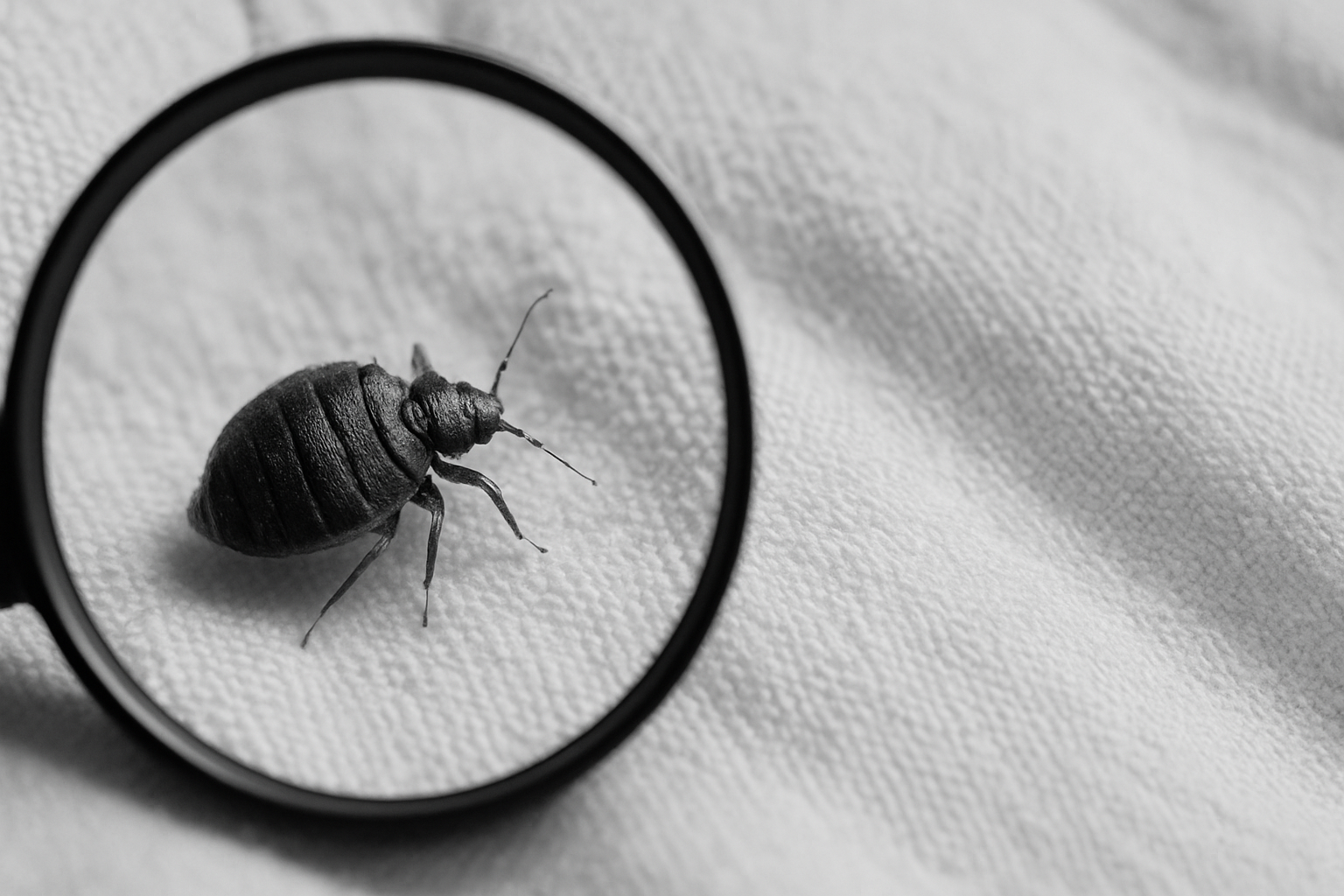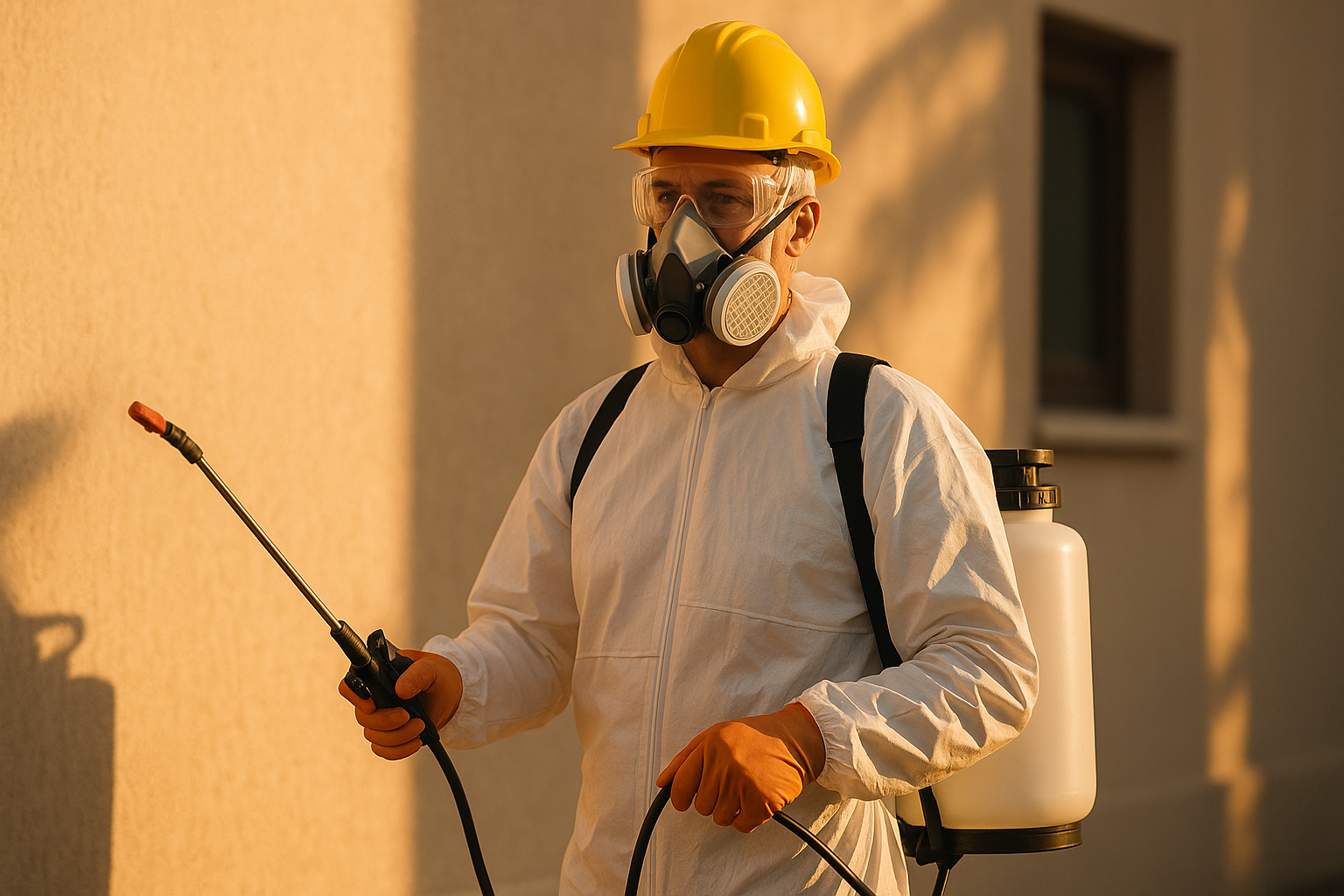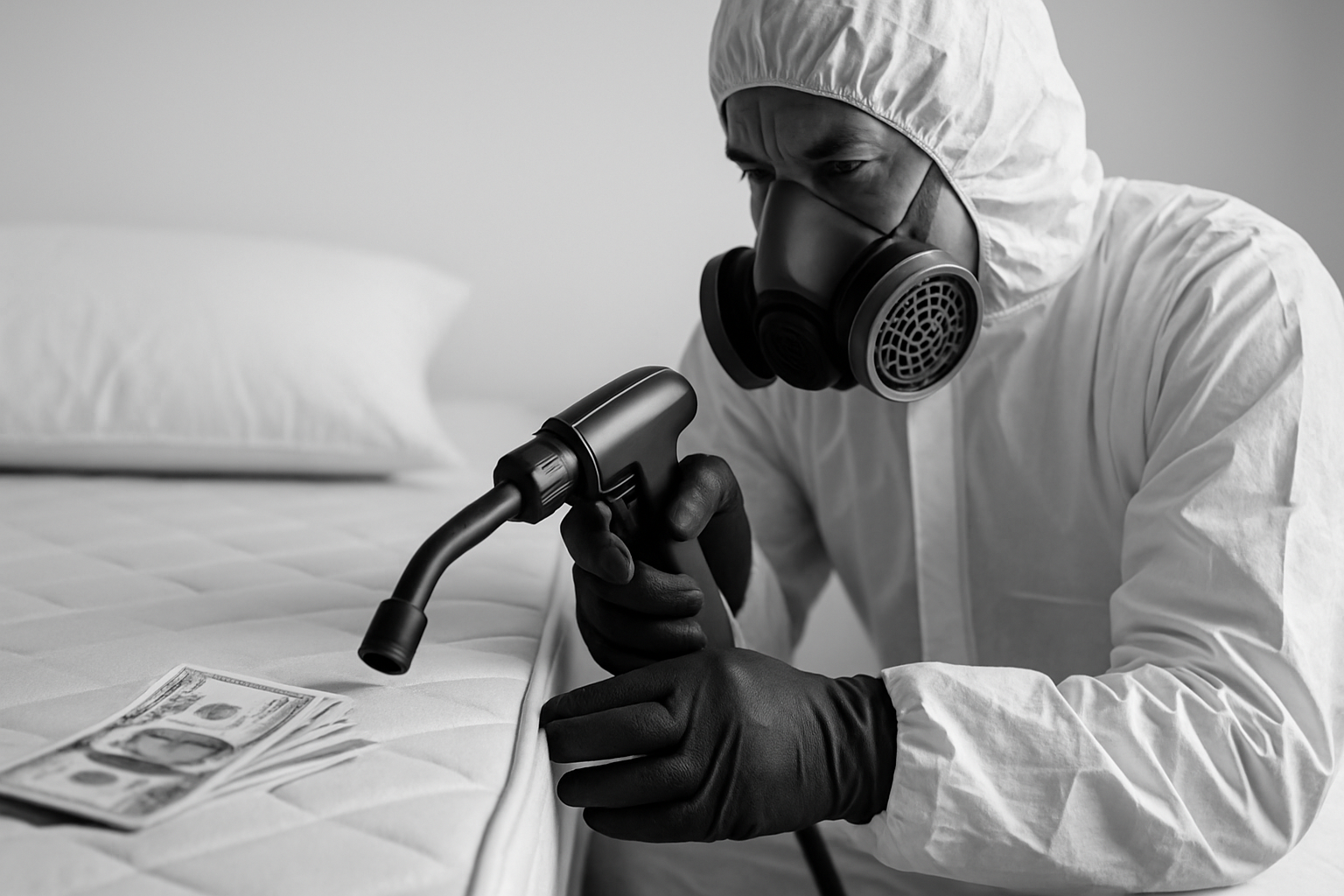Table of Contents
Introduction to Bed Bug Identification in Dubai
Bed Bug Identification in Dubai is essential as infestations continue to rise in residential and commercial areas, including Downtown Dubai, Business Bay, and Dubai Marina. Quickly and accurately spotting these pests is crucial for preventing widespread problems and maintaining a healthy environment. This article provides a comprehensive guide on Bed Bug Identification, combining essential tips, images, and frequently asked questions to empower residents and businesses in Dubai with the knowledge needed to detect these pests early.
Understanding the basics of Bed Bug Identification—what bed bugs look like, how their bites differ from other insects, and how to recognize common look-alike species—can save time and avoid confusion. With increasing awareness and regulatory support from Dubai Municipality, pest control efforts have improved, but early detection remains the best defense. In a city like Dubai, where international travel and dense living conditions are common, Bed Bug Identification becomes not just a household necessity but also a critical part of maintaining public health standards. Residents who understand how to identify these pests early can prevent costly treatments and protect their families.
Common Characteristics of Bed Bugs
Bed bugs are small, wingless insects that feed solely on blood. Here are some key physical traits used in proper Bed Bug Identification:
- Size: Adult bed bugs are typically about 5-7 mm long, roughly the size of an apple seed.
- Color: They appear reddish-brown and may become more swollen and darker after feeding.
- Shape: Flattened, oval bodies make them adept at hiding in narrow spaces.
- Feet and Antennae: They have six legs and two antennae that are segmented.
- Behavior: Mostly nocturnal, they tend to hide during the day in mattress seams, furniture joints, and cracks.
In Dubai homes, these hiding spots often include bedding in properties located in areas like Nad Al Sheba and Arabian Ranches, where close living quarters can facilitate spread. Recognizing these traits is the foundation of accurate Bed Bug Identification in Dubai.
Bed bugs do not fly or jump but move quickly across floors and walls. If you find small bloodstains or dark spots (fecal matter) near beds, these signs can reinforce suspicion of infestation. Because of their small size, many Dubai residents mistake bed bugs for harmless insects. However, learning the details of Bed Bug Identification—such as their reddish-brown color and flat body—ensures people don’t ignore early signs that can quickly turn into full-blown infestations.
Identifying Bed Bug Bites vs Flea Bites
Many residents confuse bed bug bites with flea bites, especially since both cause red, itchy marks. Knowing the differences is vital for accurate Bed Bug Identification and treatment.
Bed Bug Bites
- Pattern: Often appear in clusters or lines, typically on exposed skin areas during sleep such as arms, neck, and face.
- Size and Shape: Small red bumps with some swelling, sometimes with a darker red center.
- Timing: Bites often develop hours to days after exposure and can last longer if scratched.
- Symptoms: Intense itching with occasional blistering in sensitive individuals.
Flea Bites
- Pattern: Typically occur on feet, ankles, and lower legs, often in irregular patterns.
- Size and Shape: Small, raised red bumps, sometimes with a halo around the bite.
- Timing: Immediate reaction after flea exposure, usually more reactive for pet owners.
- Symptoms: Itching and irritation, but less likely to cluster in lines.
In Dubai homes, flea infestations are common in households with pets living in areas such as Business Bay or Dubai Marina, whereas bed bug presence is often linked to second-hand furniture or hotel stays. Clear Bed Bug Identification also depends on understanding bite patterns. Unlike flea bites, which are usually lower on the body, bed bug bites tend to appear in areas exposed while sleeping. This knowledge is particularly important for families in Dubai, where both pets and frequent travel can increase confusion between fleas and bed bugs.
Bed Bug Look-Alikes: Carpet Beetles and Others
Misidentifying bed bugs can undermine correct Bed Bug Identification and lead to ineffective eradication methods. Common look-alikes include carpet beetles and dust mites, which do not pose the same biting threat but may cause confusion. Differentiating these insects from other species is a vital step in effective Bed Bug Identification. Distinguishing bed bugs from similar insects is a critical part of reliable Bed Bug Identification, ensuring residents of Dubai don’t waste time or money on the wrong treatments.
Carpet Beetles
- Appearance: Smaller than bed bugs, rounder, and covered with patterned scales.
- Damage: They feed on natural fibers, damaging carpets and clothing rather than biting humans.
- Movement: More active during the day.
Bat Bugs
- Similarity: Almost identical in appearance but prefer bats as hosts.
- Location: Rare in residential buildings unless bats are present.
Spider Beetles and Booklice
- Size: Much smaller and move differently than bed bugs.
- Damage: Do not bite humans.
Spotting these differences is critical in Dubai apartments or villas where infestations may be confused due to similar environmental conditions.
Visual Guide with Images for Bed Bug Identification
Visual aids significantly enhance correct Bed Bug Identification. Here is a basic guide for Bed Bug Identification, with recommended ways to collect samples for inspection:
| Species | Size | Color | Distinctive Features | Typical Hiding Spots |
|---|---|---|---|---|
| Bed Bug (Cimex lectularius) | 5-7 mm | Reddish-brown | Flat, oval body; no wings | Mattresses, bed frames, cracks in furniture |
| Carpet Beetle | 2-4 mm | Varied colors with patterned scales | Rounder shape, wings present but do not fly indoors often | Carpets, wool, natural fabrics |
| Flea | 1.5-3.3 mm | Dark brown | Jumping legs, narrow body | Pet bedding, carpets |
For a more detailed and official resource, visit the Dubai Municipality Public Health Pest Control section for guidance on identifying bed bugs.
To collect samples safely, use tape or a piece of clear sticky paper, and photograph the insect next to a ruler or common object to show scale. This helps professional pest controllers, especially those operating locally in Dubai such as Saniex for expert bed bug detection, with prompt and accurate identification.
Preventive Measures and When to Seek Professional Help
Preventing bed bug infestations starts with awareness and routine inspection, especially in Dubai’s bustling hotel districts and residential complexes.
- Regular Inspection: Examine mattress seams, cushions, and crevices monthly.
- Careful Second-Hand Furniture Selection: Always inspect and, if possible, treat used furniture before bringing it into your Dubai home.
- Laundering Bedding: Use hot water and a high-heat dryer setting to kill any hitchhiking bugs.
- Vacuuming: Frequent vacuuming around beds and furniture can reduce eggs and bugs.
- Monitoring: Use bed bug interceptors under bed legs to detect early presence.
If you notice consistent bites, visible bugs, or signs like blood spots on linens, it’s best to consult a professional pest control company for expert Bed Bug Identification and extermination. In Dubai, experienced services specialize in bed bug eradication tailored to Dubai’s regulations and environmental conditions.
FAQs About Identifying Bed Bugs
How quickly can bed bugs spread in a Dubai apartment?
They can spread within days to neighboring units, especially in high-density buildings like those in Business Bay and Downtown Dubai, making early identification critical.
Can bed bugs survive in Dubai’s climate year-round?
Yes, indoor environments like air-conditioned homes provide stable conditions for bed bugs to thrive throughout the year.
Are bed bug bites dangerous?
While not known to transmit diseases, bites can cause severe itching, allergic reactions, and secondary infections if scratched excessively.
What is the best method for reliable Bed Bug Identification in Dubai?
The most reliable method of Bed Bug Identification is visual confirmation combined with professional inspection using trained dogs or specialized equipment.
Can regular cleaning eliminate bed bugs?
Cleaning helps reduce numbers but typically won’t eliminate an infestation without targeted treatment.
Conclusion and Call to Action
Accurate Bed Bug Identification is the first step toward effective control and prevention in Dubai. Knowledge about distinguishing these pests from look-alikes and understanding bite patterns is essential for safeguarding your home or business. Use the tips, images, and advice outlined here to stay vigilant. Contact trusted Saniservice experts offering Saniex pest control solutions for reliable Bed Bug Identification and extermination services in Dubai.
For guaranteed peace of mind and professional intervention, contact trusted local experts who understand Dubai’s unique pest challenges and comply with Dubai Municipality standards.
Don’t wait for infestations to worsen—act now to protect your health and property.
Understanding Bed Bug Identification: Key Characteristics and Signs
Accurate detection of bed bugs is essential for effective management and eradication, particularly in Dubai’s residential and commercial environments where these pests have increasingly become a concern. Bed bugs (Cimex lectularius) are small, elusive insects that thrive in warm, humid conditions, often hiding during the day and emerging at night to feed on human blood. Misidentification or delayed detection can lead to widespread infestations, causing discomfort and health complications for occupants. This section delves into how to recognize bed bugs, what physical features to look for, and the common signs indicating their presence.
Physical Characteristics of Bed Bugs
Bed bugs are notoriously difficult to spot because of their small size and tendency to hide in narrow crevices. Recognizing their physical attributes can aid early detection:
- Size and Shape: Adult bed bugs measure approximately 4 to 5 millimeters in length—roughly the size of an apple seed. They have a flat, oval-shaped body that becomes more elongated and swollen after feeding.
- Color: Before feeding, bed bugs are tawny or reddish-brown. After a blood meal, their bodies turn a deeper red due to the ingested blood, making freshly fed bugs more conspicuous.
- Body Texture: Despite their flattened appearance, bed bugs have a segmented body with tiny hairs that give them a somewhat ridged and leathery texture.
- Legs and Antennae: They possess six legs and two antennae, allowing them to move relatively quickly for their size, especially when disturbed or searching for hosts.
When inspecting infested areas, it’s important to differentiate bed bugs from similar-looking insects such as bat bugs or spider beetles, which do not pose the same threats and require different control measures. Consulting pest control professionals in Dubai, who are trained in bed bug morphology, is advisable for confirmation.
Common Signs Indicating Bed Bug Presence
Detecting bed bugs goes beyond spotting the insects themselves. Often, early signs are subtle and require careful observation, particularly in densely populated Dubai areas like Dubai Marina or Downtown Dubai where infestations can spread rapidly due to high occupancy rates.
- Exoskeletons (Shed Skins): As bed bugs mature, they shed their skins multiple times. These exoskeletons can accumulate near mattress seams, bed frames, or furniture joints and appear as translucent shells.
- Dark Spots and Stains: Bed bugs excrete digested blood, leaving behind dark, rusty stains on bedding, mattresses, and upholstery. These spots are often concentrated along edges, corners, or seams.
- Unusual Odors: In heavily infested areas, a musty, sweetish odor is sometimes noticeable. This scent is produced by bed bug scent glands and can alert residents or facility managers to a hidden problem.
- Itchy Bites and Skin Reactions: Bed bug bites typically appear as small, red, itchy welts in rows or clusters, often found on exposed skin areas during sleep. However, bite reactions vary greatly among individuals, with some showing no symptoms.
- Live Bugs: Probably the most definitive sign during bed bug detection is finding live specimens in crevices, mattress seams, electrical outlets, or behind wall hangings.
Residents of Dubai’s densely populated neighborhoods like Business Bay or Jumeirah may notice these signs first in shared accommodations or leasing apartments, where bed bug infestations can quickly escalate if not tackled promptly.
Where to Inspect During Bed Bug Detection
Thorough inspection is critical because bed bugs conceal themselves in hard-to-reach places. In Dubai homes or hotels (which adhere to hygiene guidelines set by the Dubai Municipality and Dubai Health Authority), these insects often hide in the following areas:
- Mattress and Box Springs: Check seams, piping, tufts, and tags for live bugs, fecal spots, or shed skins.
- Bed Frames and Headboards: These wooden or metal structures commonly provide cracks and joints that attract bed bugs.
- Furniture and Upholstery: Inspect sofas, chairs, and recliners, particularly underneath cushions and along seams.
- Electrical Outlets and Wall Voids: Bed bugs will nest near hosts and hide in tiny spaces including behind switch plates, power sockets, and behind wall paintings.
- Luggage and Personal Items: In locations such as hotels or Airbnb rentals in Dubai Marina or Downtown Dubai, luggage is a frequent transport vector for bed bugs.
Dubai residents can benefit from partnering with professional pest control services like Saniex, who bring specialized knowledge and equipment suited to the unique challenges of the local environment — particularly the hot climate and high building density of the city.
Importance of Early Bed Bug Detection and Prevention in Dubai
Early recognition of bed bugs prevents costly infestations and reduces health risks. In Dubai, where hospitality and real estate sectors are vital, maintaining pest-free environments is regulated under standards enforced by the Dubai Municipality and the Dubai Health Authority. Efficient bed bug detection supports compliance with these local regulations and helps avoid penalties or loss of reputation.
Prompt identification also reduces the psychological stress that comes from dealing with bed bugs, which is common among Dubai residents and visitors alike. Bed bugs do not transmit diseases, but bites can lead to secondary infections from scratching. Professionals recommend routine inspection during hotel room turnovers and residential cleaning, especially in neighborhoods like Nad Al Sheba or Arabian Ranches, which experience high turnover in inhabitants.
How to Document and Report Findings
Once signs of bed bugs are confirmed, documenting the findings methodically improves treatment outcomes. Residents or property managers should take clear photos of the bugs, droppings, and affected areas and keep records of bite symptoms reported by occupants. This evidence is useful when engaging Dubai-based pest control companies or when reporting to the Dubai Municipality’s pest management division. Accurate records of bed bug presence assist in tailoring treatments and verifying success during follow-ups.
In summary, effective bed bug detection involves close examination of physical characteristics, recognition of common signs, methodical inspection of high-risk areas, and timely reporting to licensed professionals. Following the guidelines set forth by Dubai’s regulatory authorities ensures that infestations are managed swiftly and responsibly, safeguarding public health and comfort.





